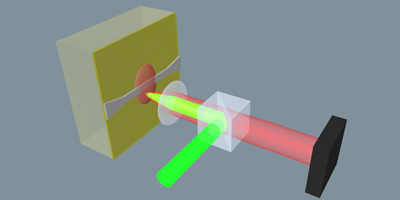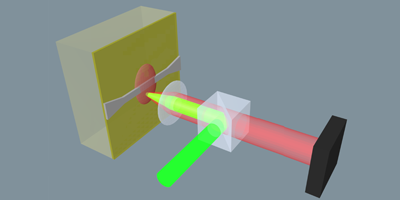Spins Move between Insulators
Transporting electron spin polarization could enable quantum computing or ultrafast alternatives to electronics, but most previous demonstrations have included at least one metal. Now, in a Rapid Communication in Physical Review B, Chris Wolfe, Vidya Bhallamudi, and colleagues at Ohio State University, Columbus, show evidence for transfer between insulators, although the mechanism is still mysterious.
The researchers monitored a defect in diamond, comprising a nitrogen impurity paired with a missing carbon atom, or vacancy. This widely studied “NV center” hosts an electron whose spin alignment is very long-lived in large crystals and which affects the intensity of photoluminescence that the center emits. The team measured emission from a film of nanodiamonds, each – nanometers in size and containing thousands of NV centers, that they had deposited on a thin layer of the insulating magnet, yttrium iron garnet (YIG). As expected, the light level from the NV centers changed dramatically when they injected microwaves that matched the centers’ resonant frequency. But it also changed when the microwaves were tuned to excite the magnetization of the YIG, suggesting that altered spin alignments in this layer moved to NV centers hundreds of nanometers away.
The researchers checked that the YIG shared its spin alignment with the nanodiamonds even when the two were separated by a -nm-thick silver electrode. The transfer mechanism remains unclear because there are no metallic electrons to carry the spin and because the very different frequencies make direct transfer unlikely. Still, the results could allow new ways to manipulate and monitor the spin in insulators. – Don Monroe





